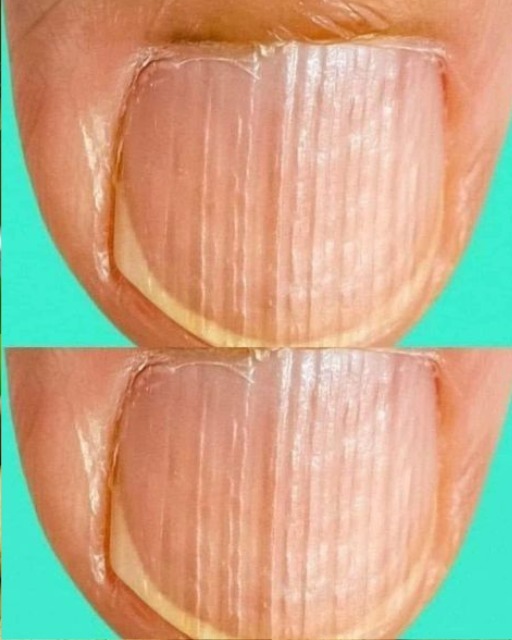Step 3: Identifying the Type of Ridge
Vertical Ridges
- Often develop naturally with age.
- Can be linked to dehydration of the nail plate or vitamin deficiency (like iron or B12).
- Sometimes seen in individuals with eczema or psoriasis.
❖ Usually harmless unless accompanied by brittleness or discoloration.
Horizontal Ridges (Beau’s Lines)
- More concerning.
- Can indicate interruption of nail growth due to:
- Severe illness (COVID-19, pneumonia)
- Chemotherapy
- Uncontrolled diabetes
- Zinc deficiency
- High stress or trauma
Beau’s Lines appear as deep grooves and may affect all nails simultaneously.
Step 4: Diagnostic Tests (if needed)
If the nail ridges suggest an underlying health issue, the doctor may order:
- Blood tests (to check for anemia, thyroid issues, nutrient deficiencies)
- Thyroid function panel
- Fungal culture (if there’s discoloration or thickening)
- Biopsy (rarely needed unless a tumor is suspected)
Prevention and Management
If the ridges are due to harmless factors like aging or mild dehydration:
- Stay hydrated
- Use hand moisturizers with urea or lactic acid
- Avoid harsh nail products
- Maintain a balanced diet rich in:
- Protein
- Iron
- Zinc
- Biotin
- Omega-3 fatty acids
For medical causes, treatment depends on the diagnosis. Managing the underlying condition (like diabetes or thyroid issues) usually helps the nails return to normal over time.
When to See a Doctor
You should consult a physician if:
- Ridges appear suddenly
- Nails are painful or discolored
- Multiple nails are affected
- You have a known chronic illness and your nail health changes
Conclusion
While some nail ridges are completely normal, especially as you age, others can point to serious health conditions. Paying attention to your nails—and acting on changes—can be a subtle but powerful step in monitoring your overall health.
Always consult a healthcare provider for a proper evaluation rather than self-diagnosing. Your nails might just be trying to tell you something important.
Would you like an infographic or downloadable guide to accompany this article?

